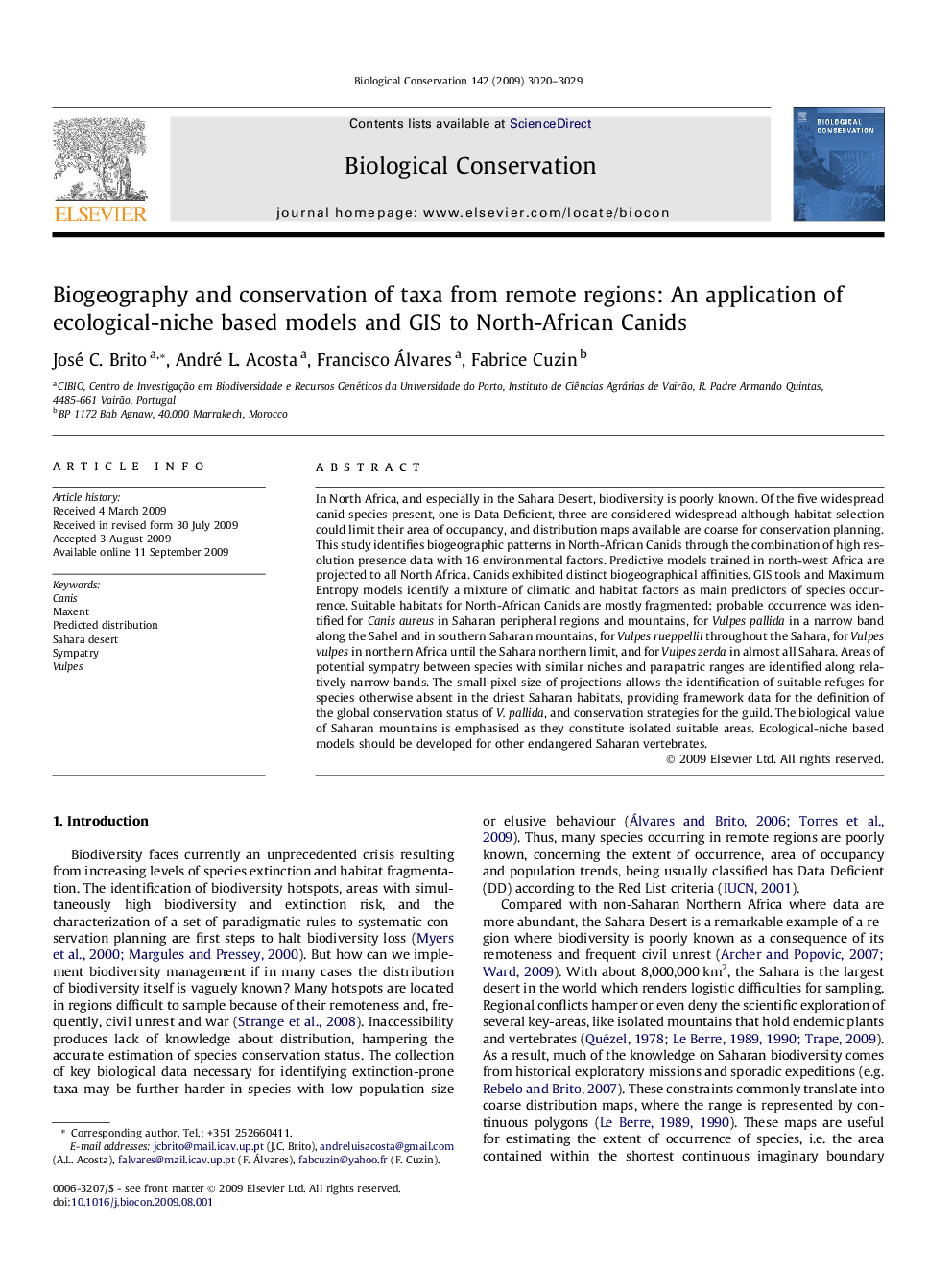| Article ID | Journal | Published Year | Pages | File Type |
|---|---|---|---|---|
| 4386400 | Biological Conservation | 2009 | 10 Pages |
Abstract
In North Africa, and especially in the Sahara Desert, biodiversity is poorly known. Of the five widespread canid species present, one is Data Deficient, three are considered widespread although habitat selection could limit their area of occupancy, and distribution maps available are coarse for conservation planning. This study identifies biogeographic patterns in North-African canids through the combination of high resolution presence data with 16 environmental factors. Predictive models trained in north-west Africa are projected to all North Africa. canids exhibited distinct biogeographical affinities. GIS tools and Maximum Entropy models identify a mixture of climatic and habitat factors as main predictors of species occurrence. Suitable habitats for North-African canids are mostly fragmented: probable occurrence was identified for Canis aureus in Saharan peripheral regions and mountains, for Vulpes pallida in a narrow band along the Sahel and in southern Saharan mountains, for Vulpes rueppellii throughout the Sahara, for Vulpes vulpes in northern Africa until the Sahara northern limit, and for Vulpes zerda in almost all Sahara. Areas of potential sympatry between species with similar niches and parapatric ranges are identified along relatively narrow bands. The small pixel size of projections allows the identification of suitable refuges for species otherwise absent in the driest Saharan habitats, providing framework data for the definition of the global conservation status of V. pallida, and conservation strategies for the guild. The biological value of Saharan mountains is emphasised as they constitute isolated suitable areas. Ecological-niche based models should be developed for other endangered Saharan vertebrates.
Related Topics
Life Sciences
Agricultural and Biological Sciences
Ecology, Evolution, Behavior and Systematics
Authors
José C. Brito, André L. Acosta, Francisco Álvares, Fabrice Cuzin,
